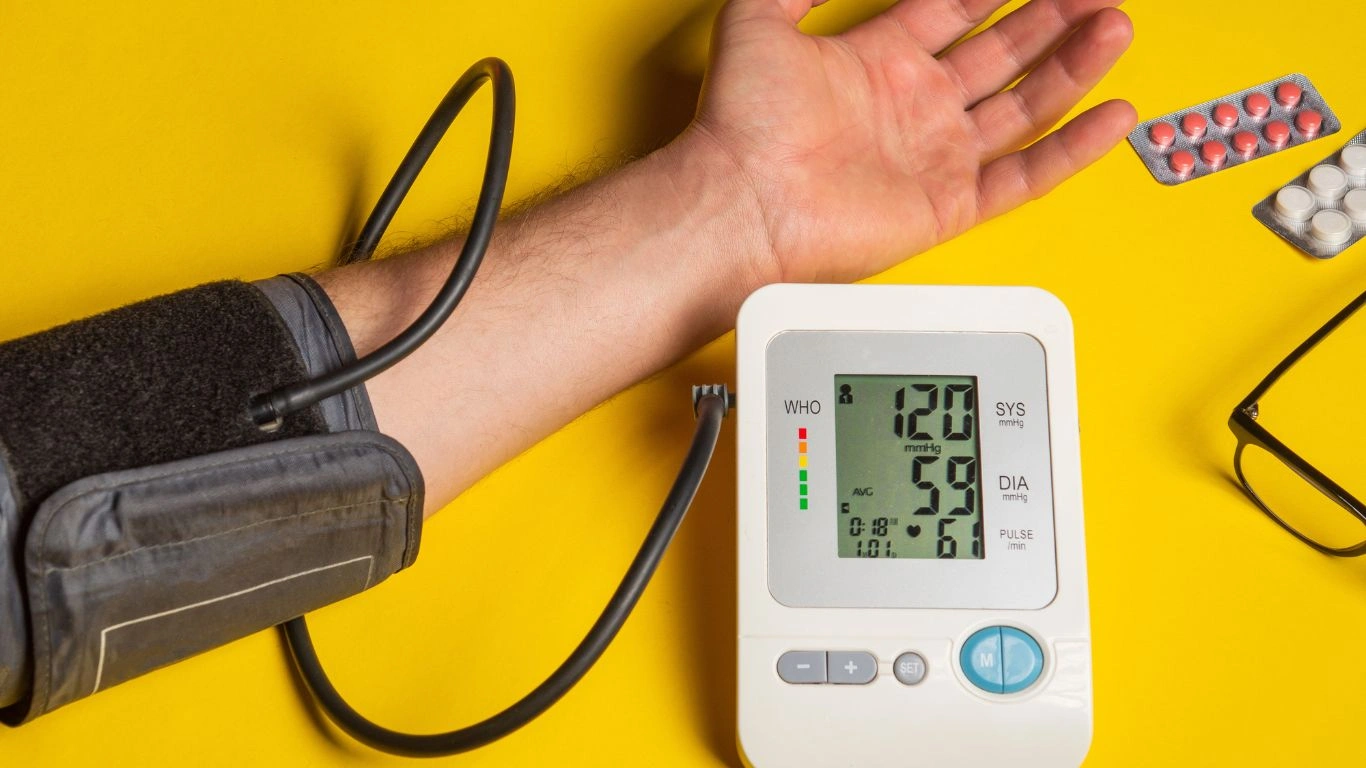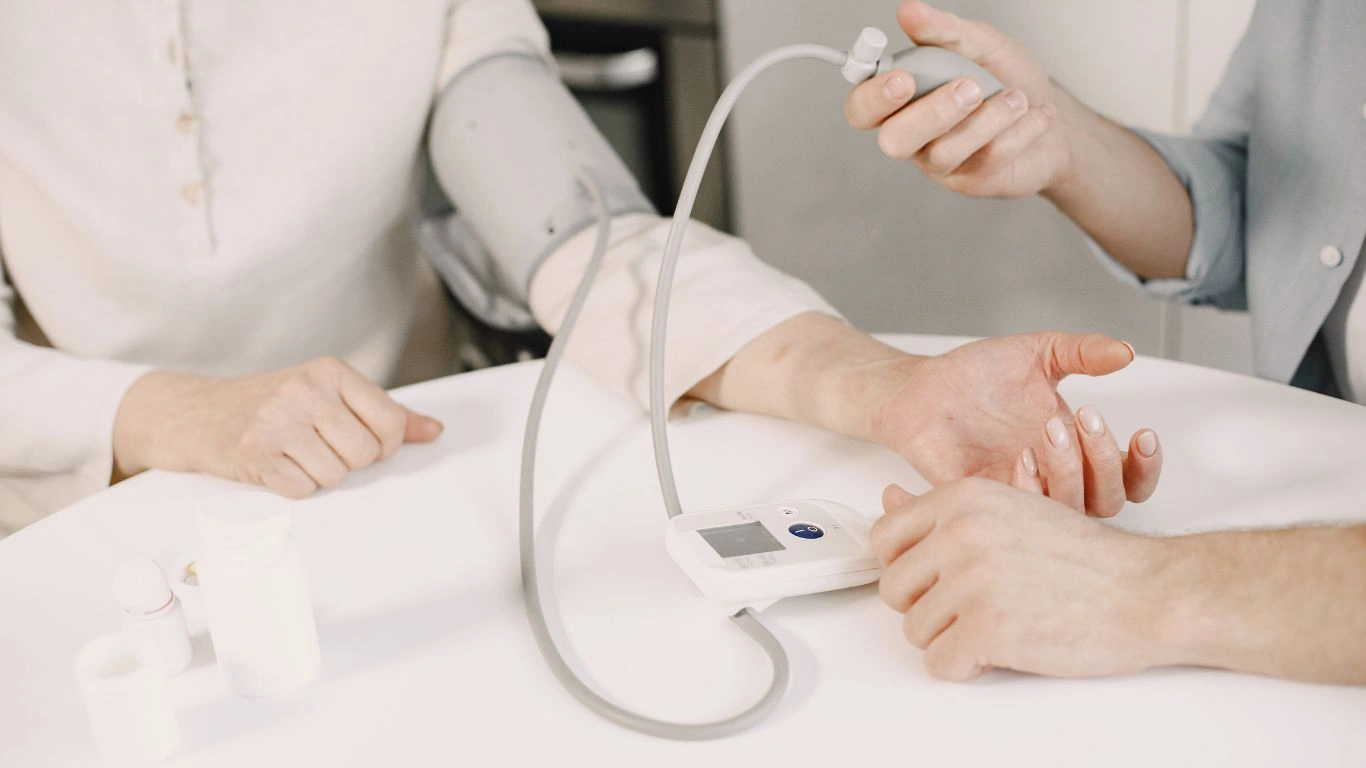How to Grocery Shop with Hypertension: Simple Tips for Heart Health
If you’re someone managing hypertension, you probably know by now that eating the right foods can make a huge difference in your health. But one of the most common questions I get from my patients is, “How do I grocery shop with hypertension?” It’s not always easy, but it is possible to shop smart and still eat delicious meals that support your heart health. As an internal medicine physician specializing in hypertension management, I’ve seen firsthand how making small changes in your diet—starting with your grocery shopping habits—can have a big impact on your blood pressure. In this post, we’re going to walk through some tips and tricks on how to grocery shop with hypertension, so you can feel confident next time you’re at the store. Let’s dive in!
Understanding Hypertension and the Importance of Diet

Before we dive into the specifics of grocery shopping, let’s take a quick moment to understand why diet is so crucial when it comes to managing hypertension. Hypertension, or high blood pressure, affects millions of people worldwide. It’s often called the “silent killer” because it usually has no symptoms, yet it puts you at risk for heart disease, stroke, and kidney damage. But here’s the good news: with the right lifestyle changes—especially a heart-healthy diet—you can help keep your blood pressure in check.
When you shop with hypertension in mind, you’re not just grabbing random items off the shelves. You’re being strategic about your choices—focusing on foods that help lower blood pressure, and avoiding those that can cause it to spike. Some foods are full of sodium, saturated fats, and added sugars, which can be big trouble for people with high blood pressure. On the flip side, others are packed with potassium, fiber, and antioxidants, which can have a positive impact on your heart health. So let’s break this down and make your next grocery trip a lot easier.
Tips for Shopping with Hypertension in Mind
1. Focus on Fresh, Whole Foods
It might sound like a no-brainer, but focusing on fresh, whole foods is one of the best ways to shop with hypertension in mind. I can’t tell you how many patients I’ve worked with who think they’re eating healthy but still struggle to manage their blood pressure because they rely too heavily on processed foods. These foods often come loaded with sodium and preservatives, which can cause your blood pressure to rise.
When you’re at the store, try to fill your cart with as many fresh fruits, vegetables, whole grains, and lean proteins as possible. Fresh produce is naturally low in sodium and high in nutrients that help manage hypertension. For example, potassium-rich foods like bananas, spinach, and sweet potatoes help balance out the effects of sodium. Whole grains like oats, quinoa, and brown rice are great choices, too—they’re full of fiber, which helps reduce blood pressure.
- Fruits: Apples, berries, citrus fruits
- Vegetables: Leafy greens, tomatoes, carrots
- Whole grains: Brown rice, quinoa, barley
- Lean proteins: Chicken, turkey, fish
2. Be Mindful of Sodium

Sodium is a major culprit when it comes to high blood pressure. It’s not just about the salt shaker at the table—many packaged and processed foods are loaded with sodium, sometimes in places you wouldn’t even expect. A can of soup, frozen meals, or deli meats can sneak in a lot of salt, which can wreak havoc on your blood pressure. In fact, I always tell my patients to aim for no more than 1,500 mg of sodium per day, but the average American consumes much more than that.
When grocery shopping, check the labels for sodium content. Look for items that say “low-sodium” or “no added salt.” You can also try to find alternatives to your usual processed foods. For example, instead of canned soups, you might choose to make your own from scratch using fresh vegetables and herbs. It might take a little more time, but it’ll be worth it for your health.
3. Choose Healthy Fats
Fats are an important part of a balanced diet, but not all fats are created equal. When managing hypertension, you’ll want to focus on heart-healthy fats—those found in foods like avocados, olive oil, nuts, and seeds. These healthy fats help lower bad cholesterol (LDL) levels, which can further reduce the risk of heart disease and stroke. On the other hand, saturated fats found in fatty cuts of meat, full-fat dairy, and fried foods can increase your blood pressure.
At the grocery store, aim to pick up sources of healthy fats, and try to limit your intake of unhealthy ones. For example, swap out regular butter for olive oil or avocado when cooking. And when you’re choosing snacks, reach for a handful of almonds or walnuts instead of chips or sugary granola bars.
4. Pay Attention to Potassium

Potassium is a superstar when it comes to managing hypertension. It helps counteract the effects of sodium by easing tension in your blood vessels and helping them relax. This makes it easier for blood to flow and keeps your blood pressure at a healthier level. Some of the best sources of potassium include bananas, sweet potatoes, beans, and leafy greens like spinach and kale.
When you’re grocery shopping, keep an eye out for potassium-rich foods. They’re often the same items that are high in other nutrients like fiber and antioxidants, so you’re getting a double benefit. I always tell my patients that potassium should be a key focus when it comes to grocery shopping with hypertension.
How to Read Labels and Make Informed Choices

One of the most important skills you can develop when grocery shopping with hypertension is knowing how to read food labels. It might seem like a small thing, but trust me—it’s a game-changer. The labels on packaged foods can give you key information that helps you make better choices. As someone who works with patients daily, I’ve seen how much easier it becomes for them to control their blood pressure once they understand what’s in the food they’re buying.
Let’s break down some essential parts of the food label that you should pay extra attention to:
- Sodium Content: Look for foods that are labeled “low sodium” or “no added salt.” Ideally, the sodium content should be less than 140 mg per serving, but many foods contain much higher amounts. Even small amounts of sodium can add up quickly throughout the day, so always check the nutrition facts before buying.
- Serving Size: The serving size can be tricky—often, we consume more than the “serving” listed on the label. So, if the sodium content per serving is 500 mg, but the serving size is small, multiply that by how much you’re actually eating to get an accurate idea of your intake.
- Potassium: The higher the potassium content, the better. As I mentioned earlier, potassium helps counterbalance the effects of sodium, so look for products that are rich in potassium. Foods like canned beans, nuts, and vegetables are often high in potassium—just make sure they don’t come with excessive sodium.
- Added Sugars: Added sugars are another concern for managing hypertension. They contribute to weight gain and can have a negative impact on your heart health. Check the label for “added sugars” and try to avoid items with high sugar content.
For example, I often recommend patients opt for low-sodium tomato sauce when cooking pasta, or choosing unsweetened oatmeal over instant packets loaded with sugar. These small swaps make a big difference over time.
Healthy Swaps for Hypertension-Friendly Meals

When you have hypertension, making healthy swaps in your meals is one of the best ways to keep your blood pressure in check. There’s no need to completely overhaul your entire diet—sometimes, just a few changes can help a lot. And the great thing is, you don’t have to sacrifice taste or convenience. Let me share some easy swaps I recommend to my patients all the time:
1. Swap Processed Meats for Lean Protein
Processed meats, like bacon, sausage, and deli meats, are often high in sodium and unhealthy fats. They may taste great, but they’re not doing your blood pressure any favors. Instead of reaching for that processed sandwich meat, try swapping it out for lean proteins like grilled chicken breast, turkey, or fish.
Fish, especially fatty fish like salmon and mackerel, are rich in omega-3 fatty acids, which can help reduce inflammation and lower blood pressure. I’ve seen many patients make the switch to fish, and they’ve noticed a significant improvement in how they feel.
2. Choose Whole Grains Over Refined Grains
Refined grains—like white bread, white rice, and pasta—are stripped of their nutrients during processing. They have a high glycemic index and can contribute to weight gain, which is a risk factor for hypertension. Instead, opt for whole grains like brown rice, quinoa, and whole-wheat bread. Whole grains are full of fiber, which not only helps lower blood pressure but also supports overall heart health.
For example, when I’m cooking at home, I always keep a stash of brown rice and whole-wheat pasta in the pantry. You can use them in place of refined grains in almost any dish, and they taste just as good—if not better!
3. Replace Salt with Herbs and Spices
If you’re used to salting your food, you might find it challenging at first to cut back. But trust me, it’s totally doable—and your taste buds will adjust. Instead of salt, experiment with herbs and spices to add flavor to your meals. Fresh herbs like basil, rosemary, thyme, and cilantro can transform a simple dish into something exciting.
Garlic and onion powder, turmeric, and paprika are other great options. They not only add depth of flavor, but many of these spices also have anti-inflammatory properties that are beneficial for overall cardiovascular health. I personally love sprinkling some rosemary and garlic powder on roasted vegetables for a heart-healthy side dish that’s bursting with flavor.
4. Choose Low-Fat Dairy or Non-Dairy Alternatives
Full-fat dairy can be high in saturated fats, which are linked to increased blood pressure and higher cholesterol levels. So, when you’re grocery shopping, look for low-fat or fat-free dairy options. If you’re not into dairy, there are plenty of non-dairy alternatives available today, like almond milk, oat milk, and coconut yogurt. Just be sure to choose unsweetened versions to avoid added sugars.
When I was first diagnosed with hypertension, I swapped out my regular cheese for a low-fat version, and I didn’t miss the full-fat version at all. Plus, I didn’t even notice a difference in taste when using almond milk in my coffee!
5. Use Healthy Cooking Oils
Cooking oils are another area where making smart choices can benefit your health. Instead of using butter or oils high in saturated fats (like vegetable oil), try switching to healthier alternatives like olive oil or avocado oil. These oils are rich in monounsaturated fats, which are heart-healthy and can help reduce inflammation.
One of my favorite ways to use olive oil is in salad dressings—just a splash of olive oil, a little balsamic vinegar, and some mustard make the perfect base for a tangy, low-sodium dressing.
Making these simple swaps in your grocery shopping can help you create meals that not only taste good but also support your efforts to manage hypertension. And remember, it’s all about making small, sustainable changes over time. Don’t feel like you have to change everything overnight!
How to Shop Smart for Hypertension-Friendly Snacks

Snacking can be a tricky territory when you’re managing hypertension. It’s easy to reach for chips, cookies, or sugary snacks, but these foods tend to be packed with sodium, unhealthy fats, and sugars, which can send your blood pressure through the roof. But don’t worry, snacks don’t have to be a downfall! You can absolutely enjoy tasty treats while keeping your blood pressure in check. It’s all about making smarter choices.
Here are some snack ideas I personally recommend to my patients who are managing hypertension:
1. Fresh Fruit and Nuts
Fruit is always a great go-to snack because it’s packed with vitamins, minerals, and fiber—all of which support heart health. Bananas, in particular, are high in potassium, which is super helpful for balancing sodium levels. Pair your fruit with a handful of unsalted nuts, like almonds or walnuts. Nuts are high in healthy fats and protein, which will help keep you full and satisfied between meals. They also provide you with omega-3 fatty acids, which are excellent for heart health.
One of my favorite snacks is apple slices with almond butter—it’s a perfect combo of sweet, salty, and satisfying!
2. Veggies with Hummus
Vegetables are full of fiber, antioxidants, and potassium, making them a perfect snack option for anyone with hypertension. You can pair your veggies with hummus for added flavor and a little protein boost. Carrot sticks, cucumber slices, bell peppers, and cherry tomatoes all make great choices. Just be sure to choose a low-sodium hummus or make your own at home so you can control the amount of salt.
Hummus is such a versatile dip, and it’s not just for veggies—sometimes I’ll even spread it on whole grain crackers or use it as a sandwich spread instead of mayonnaise. It’s an easy, heart-healthy swap.
3. Greek Yogurt with Berries
If you’re craving something creamy, Greek yogurt is a fantastic choice. It’s rich in protein and probiotics, which support digestion and overall health. When you add fresh berries like blueberries or strawberries, you’re also getting an extra boost of antioxidants and vitamins. Plus, Greek yogurt is lower in sugar than regular yogurt, making it a more heart-healthy option.
I like to top my Greek yogurt with chia seeds for a little extra fiber and omega-3s. It’s a delicious snack that’ll keep you feeling full and satisfied.
4. Whole Grain Crackers and Cheese
If you’re in the mood for something savory, whole grain crackers paired with a small piece of cheese can be a great option. Whole grains are high in fiber and nutrients, while cheese provides a source of calcium and protein. Just be mindful of the portion size with cheese—opt for low-fat or part-skim varieties to keep the saturated fat in check.
Sometimes I’ll even top my crackers with a little bit of avocado for added healthy fats and potassium. It’s a simple, delicious snack that supports heart health without the guilt!
5. Roasted Chickpeas
If you’re craving something crunchy, roasted chickpeas are an excellent option. You can find them pre-packaged or make them yourself by roasting chickpeas in the oven with olive oil and your favorite spices. Chickpeas are high in fiber, protein, and potassium, making them a perfect choice for managing hypertension. They’re also naturally low in sodium, especially if you prepare them at home.
I’ve found that roasting chickpeas gives them a satisfying crunch that can satisfy cravings for chips without all the unhealthy fats and sodium.
Creating a Hypertension-Friendly Meal Plan

Now that you know how to shop for heart-healthy foods and snacks, let’s talk about how to create a meal plan that fits your lifestyle. A meal plan doesn’t have to be complicated or time-consuming, but it can make a world of difference in managing your hypertension. By planning ahead, you can ensure that your meals are balanced and nutritious, making it easier to stick to your heart-healthy goals.
Here are a few tips to help you get started:
1. Plan for a Balanced Plate
When planning your meals, aim to make half of your plate fruits and vegetables. The other half should include lean proteins like chicken, turkey, or plant-based options like tofu or lentils, and whole grains like quinoa, brown rice, or whole-wheat pasta. This creates a balanced meal full of fiber, vitamins, and nutrients that help keep your blood pressure in check.
For example, for lunch, I often prepare a salad with mixed greens, grilled chicken, a variety of colorful veggies, and a small serving of quinoa. It’s satisfying, full of flavor, and packed with heart-healthy ingredients!
2. Cook in Bulk and Keep it Simple
If you have a busy schedule (and let’s face it, who doesn’t?), cooking in bulk is a huge time-saver. Cook a big batch of a hypertension-friendly dish, like a vegetable stir-fry, soup, or chili, and portion it out for multiple meals. This way, you always have healthy options ready to go, and you’re less likely to fall back on unhealthy takeout or processed foods.
Keep the flavors simple—use herbs and spices, not salt, to create bold, delicious meals. And make sure to include a variety of different vegetables, lean proteins, and whole grains to keep things interesting.
3. Stay Hydrated
Finally, don’t forget to stay hydrated! Water is one of the most important (and simplest) things you can do for your heart and blood pressure. Aim to drink at least 8 cups of water a day, and avoid sugary drinks or sodas, which can increase your risk of hypertension.
Sometimes, I’ll add a few slices of lemon or cucumber to my water for a little flavor boost, but that’s all it takes. Keeping a reusable water bottle with you throughout the day is a great reminder to drink more water and stay hydrated.
References
Disclaimer: The content provided in this article is for informational purposes only and should not be considered as medical advice. Always consult with your healthcare provider before making any significant changes to your diet or lifestyle, especially if you have any pre-existing health conditions.

Dr. Gwenna Aazee is a board-certified Internal Medicine Physician with a special focus on hypertension management, chronic disease prevention, and patient education. With years of experience in both clinical practice and medical writing, she’s passionate about turning evidence-based medicine into accessible, actionable advice. Through her work at Healthusias.com, Dr. Aazee empowers readers to take charge of their health with confidence and clarity. Off the clock, she enjoys deep dives into nutrition research, long walks with her rescue pup, and simplifying medical jargon one article at a time.






